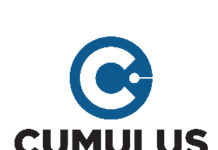
(By Alec Drake) In revenue management, one goal is to optimize revenues while ensuring customer satisfaction. An aggressive approach to selling all available inventory, especially in downturns, may lead to overselling, resulting in organizational disruption, lost selling hours, and poor customer service. Let’s explore the factors contributing to overselling and strategies that can temper oversell situations.
Four Factors Contributing to Oversell
- Pricing Too Low
One of the main drivers of overselling is pricing too low. Moreover, rates might be priced based on heavy discount strategies to build billing or reach budgets rather than considering actual demand. In that case, they can leave stations vulnerable to the cost of overselling. This occurs when pricing adjustments are made late in the sales cycle, leading to insufficient time to assess actual demand accurately.
Additionally, failed negotiations internally with sellers (yes, it happens) or with your price-sensitive customers can force stations to oversell. Thus, it is crucial to have a robust and comprehensive pricing strategy that aligns with actual market demand and allows for proactive adjustments coupled with balanced terms and conditions.
- Poor Visibility on Demand Forecasts
Underestimating demand due to inadequate visibility on demand forecasts leads to overselling. Relying solely on actual sellout data without considering pending or misplaced close probabilities in calculations of pending inventory demand can cause managers to misjudge availability. Specific inventory buckets, such as endorsements or sponsorship placements, can sell out quickly and require careful monitoring. Consistent and accurate forecasting, using valid data points, is essential to anticipate demand trends and proactively manage inventory.
- Low and High Yield Spill
Low yield spill occurs when inventory and associated revenue are preempted without the ability to recapture it. This situation disrupts the traffic logs, resulting in lost sales and production staff productivity. On the other hand, high-yield spill involves turning away premium-priced opportunities due to a lack of access to inventory.
Both scenarios adversely affect customer relationships and future revenues, leading to lost revenue and fewer opportunities to develop new customers. Effective yield management involves tracking pricing to synchronize with demand patterns, optimizing available inventory use, and minimizing spillage.
- Advertiser Avalanche
Unpredictable and sudden surges in demand, which I call an “advertiser avalanche,” can catch even the most skilled yield managers off guard, leading to overselling. While such events may present opportunities for increased revenue, capitalizing appropriately on the surge and ensuring long-term customer relationships and satisfaction is essential. Proactive planning and considering the disruption or opportunity cost of accepting last-minute orders are crucial.
How Do You Temper Oversell Situations?
- Focused Training That Limits Oversell
Sales training should emphasize managing proposals with transparent terms and conditions before they become orders, ensuring that sales teams make informed decisions to avoid overselling scenarios. Better guardrails in the sales process to limit the negotiation in the sales manager’s office with sellers can reduce overselling—clear narratives help support the value of station inventory and secure premium pricing engagement by customers where required.
- Customer Relationship Focus
Building and maintaining strong customer relationships is essential for long-term success. Organizations can reduce the need for overselling to retain business by protecting customer relationships. Offering exceptional customer service and catering to clients’ needs can foster loyalty and lead to repeat business. Additionally, focusing on adding new customers can help restructure existing agreements that create hurdles to optimal inventory management, thus leading to increased revenues.
- Proactive Yield Management
A proactive approach to yield management involves estimating actual and pending inventory pressure to determine optimal pricing that encourages or curbs demand. By regularly assessing market conditions and making pricing adjustments accordingly, an organization can avoid the pitfalls of Overselling.
Conclusion
Overselling does create organizational challenges, disrupts operations, and harms customer relations. However, through proactive yield management, accurate demand forecasting, and a customer-focused approach, organizations can strike the right balance between generating revenue and ensuring customer satisfaction. By implementing these strategies, revenue management can achieve optimal results, ultimately driving the organization toward success and profitability.
Alec Drake advises and writes on revenue management. He founded T.R.I.P. “The Radio Invigoration Project” group and publishes a monthly newsletter, The Sales T.R.I.P. both on LinkedIn. Alec can be reached at [email protected]. His previous Radio Ink posts are at Radioink.com/author/adrake.






